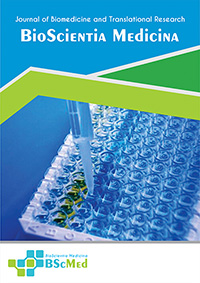Main Article Content
Abstract
Background: Alimentary tract duplication cysts represent a rare and challenging subset of congenital anomalies. Their non-specific symptomatology often leads to their misidentification as more common pediatric conditions, making a clear diagnostic pathway essential. With jejunal localization being particularly uncommon, these lesions can range from being asymptomatic to causing life-threatening abdominal emergencies. The evolution of high-resolution prenatal imaging, however, has fundamentally altered their management, enabling proactive postnatal intervention.
Case presentation: A three-month-old female infant, with a history of a non-specific cystic intra-abdominal mass identified on a second-trimester antenatal ultrasound, was referred for progressive abdominal distension and non-bilious vomiting. Postnatal examination revealed a palpable right upper quadrant mass. A contrast-enhanced computed tomography (CT) scan confirmed a 3.9 x 3.9 x 3.3 cm thick-walled jejunal duplication cyst causing partial obstruction. The patient underwent a successful exploratory laparotomy with segmental jejunal resection and primary end-to-end anastomosis. The postoperative course was uneventful, with complete resolution of symptoms. Histopathology confirmed a benign jejunal duplication cyst without heterotopic mucosa.
Conclusion: Jejunal duplication cysts are a critical, albeit rare, consideration in the differential diagnosis of an infant with an abdominal mass or intestinal obstruction. This case serves as a paradigm of modern perinatal care, where an antenatal clue facilitates a planned, definitive postnatal cure. Complete surgical resection remains the gold standard, preventing severe complications and ensuring an excellent long-term prognosis.
Keywords
Article Details
As our aim is to disseminate original research article, hence the publishing right is a necessary one. The publishing right is needed in order to reach the agreement between the author and publisher. As the journal is fully open access, the authors will sign an exclusive license agreement.
The authors have the right to:
- Share their article in the same ways permitted to third parties under the relevant user license.
- Retain copyright, patent, trademark and other intellectual property rights including research data.
- Proper attribution and credit for the published work.
For the open access article, the publisher is granted to the following right.
- The non-exclusive right to publish the article and grant right to others.
- For the published article, the publisher applied for the Creative Commons Attribution-NonCommercial-ShareAlike 4.0 International License.





